Additional Bog Species:
Aquifoliaceae (Holly Family)
Ilex (Nemopanthus) mucronata (Mountain Holly)
Http://en.wikipedia.org/wiki/Ilex_mucronata
Http://plants.usda.gov/java/profile?symbol=ILMU


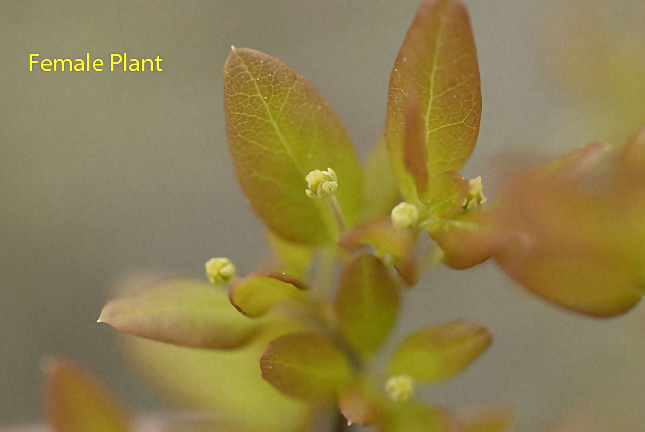

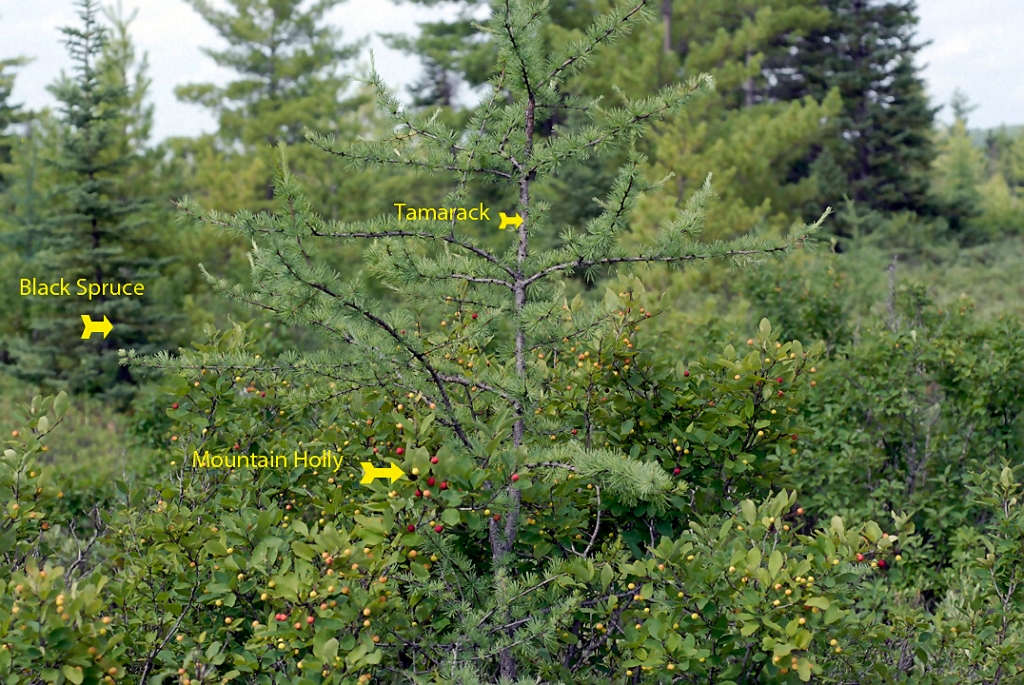
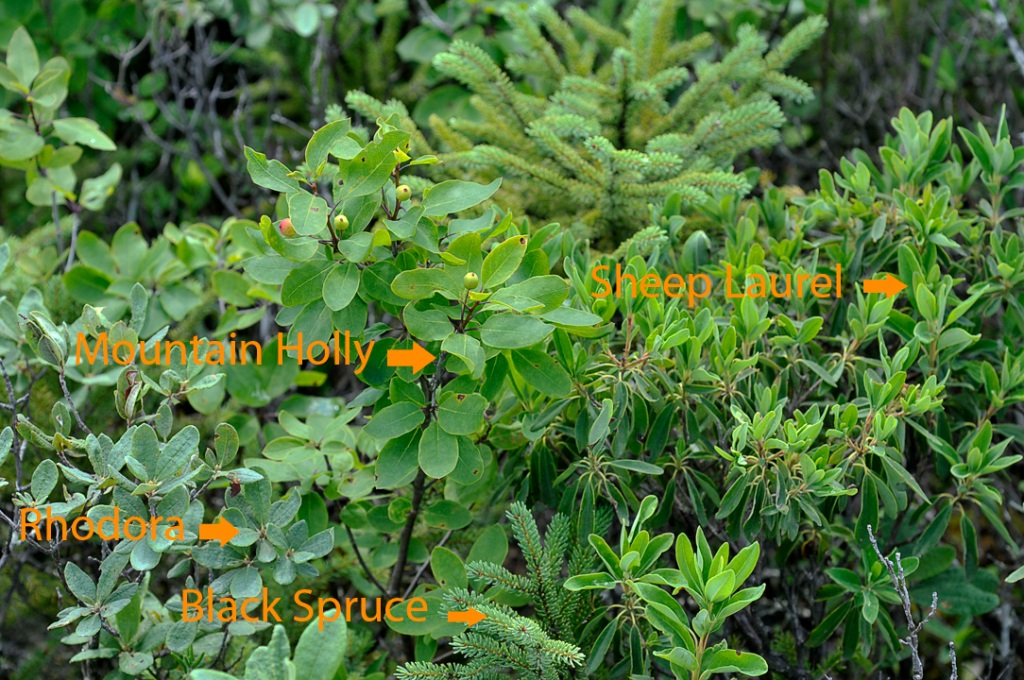
Mountain Holly is a small deciduous shrub reaching a height of about 4 meters. It is much shorter on the bog. The small ,alternately arranged leaves lack teeth and attach to the stem via a long petiole. Each leaf has a small bristle at its tip. The pedicels and terminal branches are a reddish-purple. The greenish-yellow male and female flowers are on separate plants. The red berries are eaten by a variety of birds, white-footed mice and raccoons. A preparation made from the root has been used as a diuretic. Additional photographs of Mountain Holly are located in the Bog Border File.
________________________________________________________________________________________________________________________________________
Asteraceae (Aster Family)
Eurybia radula(Aster radula) (Aster, Rough-Leaved)
Http://en.wikipedia.org/wiki/Eurybia_radula
Http://plants.usda.gov/java/profile?symbol=EURA10


This species reaches a height of about 0.3 to 0.6 meters. The flower, about 2.5 cm in diameter, consists of a yellow central disc surrounded by light violet rays.
_______________________________________________________________________________________________________________________________________
Solidago uliginosa (Goldenrod, Bog)
Http://plants.usda.gov/java/profile?symbol=SOUL


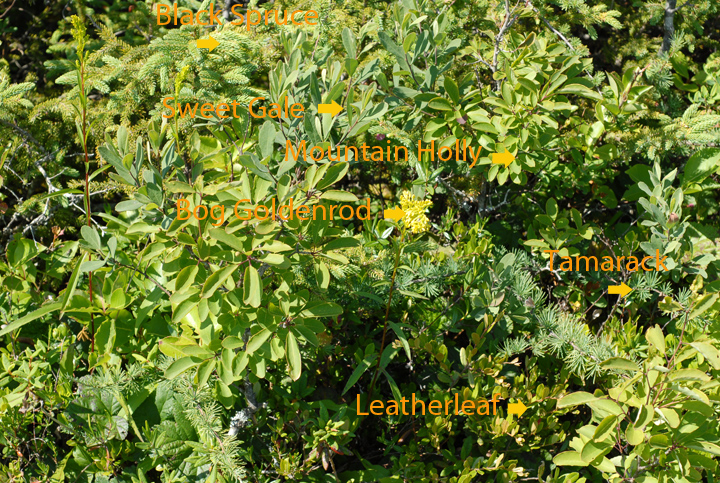
Bog goldenrod has an erect, smooth stem, about 0.7 to 1 meter high, that arises from a branched rhizome (Underground Stem). Smooth, alternate leaves extend from the stem. Lower, basal leaves are about 6 cm long while those towards the stem tip are shorter. Leaves are pointed at the tip and wider at the base and they clasp the stem. Flowering branches tend to crowd towards the stem.
__________________________________________________________________________________________________________________________________
Caprifoliaceae (Honeysuckle Family)
Viburnum cassinoides (Witherod or Wild Raisin)
Http://en.wikipedia.org/wiki/Witherod
Http://plants.usda.gov/java/profile?symbol=VINUC
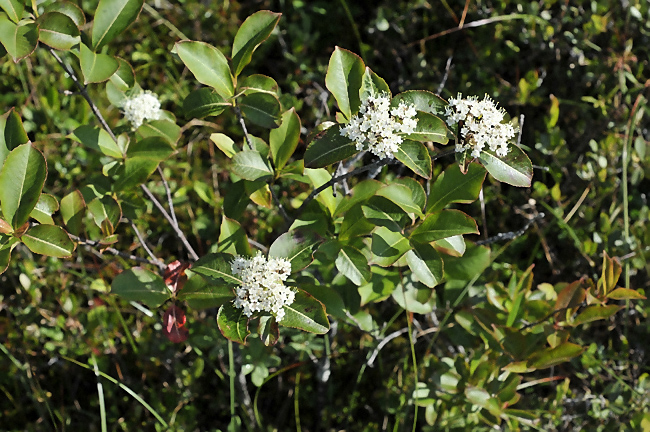
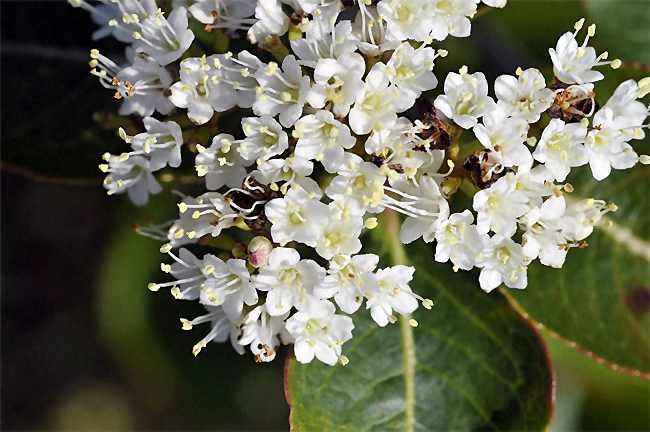

Witherod is a deciduous shrub that grows up to 4 meters in height, although it is much shorter on the bog. The thick, deciduous, shiny, opposite green leaves have no marginal teeth (Entire). The leaf edge tends to be wavy. There are terminal, flat clusters of star-shaped white flowers. The later fruit is initially green, turns whitish and finally a purple-black color. A fragrant tea can be prepared by steeping leaves or fruit in hot water. Infusions made from root or bark have been used to treat fever and spasms.
_______________________________________________________________________________________________________________________________
Clusiaceae (St John’s-wort Family)
Triadenum virginicum (St John’s-Wort, Marsh)
Http://plants.usda.gov/java/profile?symbol=TRVI2




Leaves of this species are oval, opposite and clasp the stem. They are blue-green with a reddish-purple margin and a reddish-purple central vein. The erect stem is about 38 cm tall. The flowers are in clusters emanating from leaf axils.
_____________________________________________________________________________________________________________________________________
Cupressaceae (Cypress Family)
Juniperus communis (Juniper,Common)
Http://en.wikipedia.org/wiki/Juniperus_communis
Http://plants.usda.gov/java/profile?symbol=JUCO6

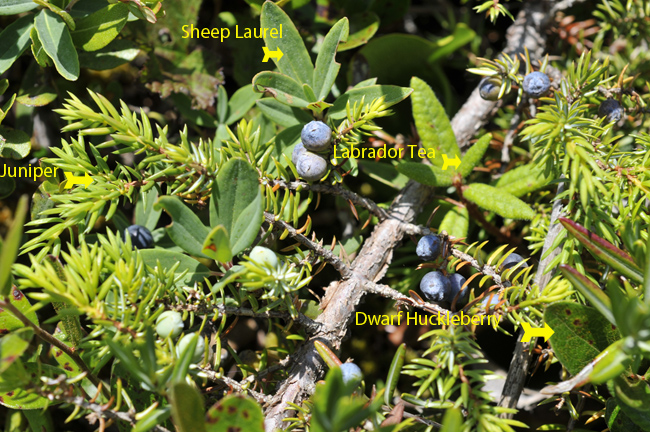


Juniper is commonly found in coastal bogs (West Quoddy Head, Eagle Hill (Campobello) and the Corea Heath). It is a low, sprawling shrub about 0.3 meters high. The evergreen leaves (needles) are three-sided with sharp points. The upper needle surface is light green and grooved while the lower surface is somewhat yellowish. The needles are arranged in groups of three. The seed cones (Berries) shown above are waxy and bluish when mature. A variety of birds consume berries that contain indigestible seeds and then transport the seeds to new locations in their fecal matter. Oil, distilled from seed cones, has been used to treat a variety of ailments such as sprains, wounds, rheumatoid arthritis and gout. Whole branches release a pleasant smell that can help deodorize a room or keep insects at bay. Juniper berries also impart a unique flavor to gin.
___________________________________________________________________________________________________________________________________________
Lythraceae (Loosestrife Family)
Decodon verticilliatus (Loosestrife, Swamp)
Http://plants.usda.gov/java/profile?symbol=DEVE
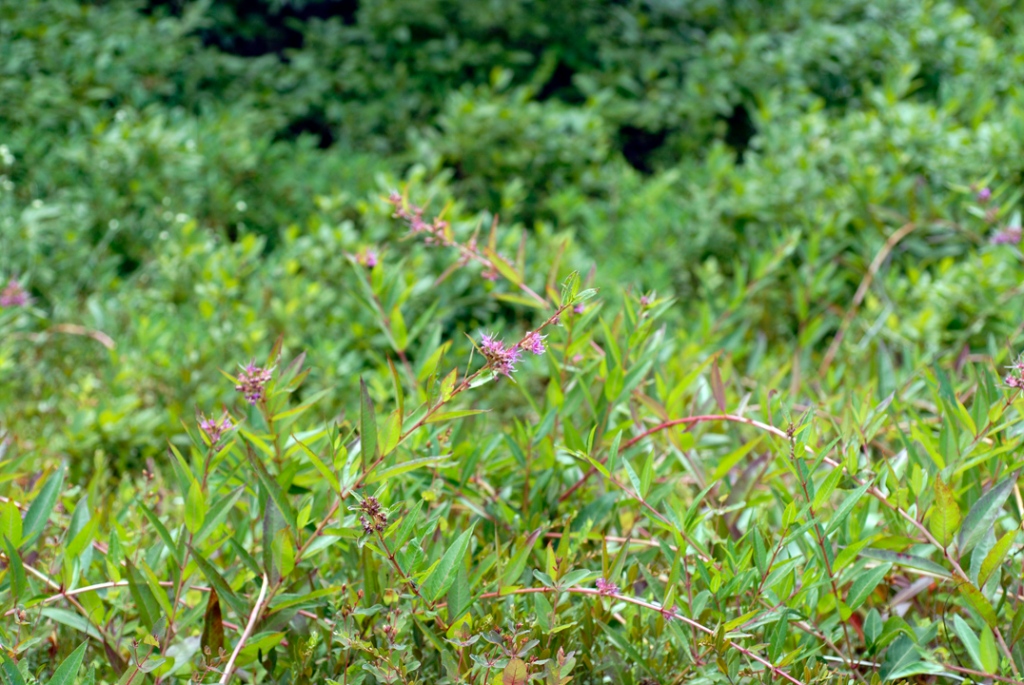

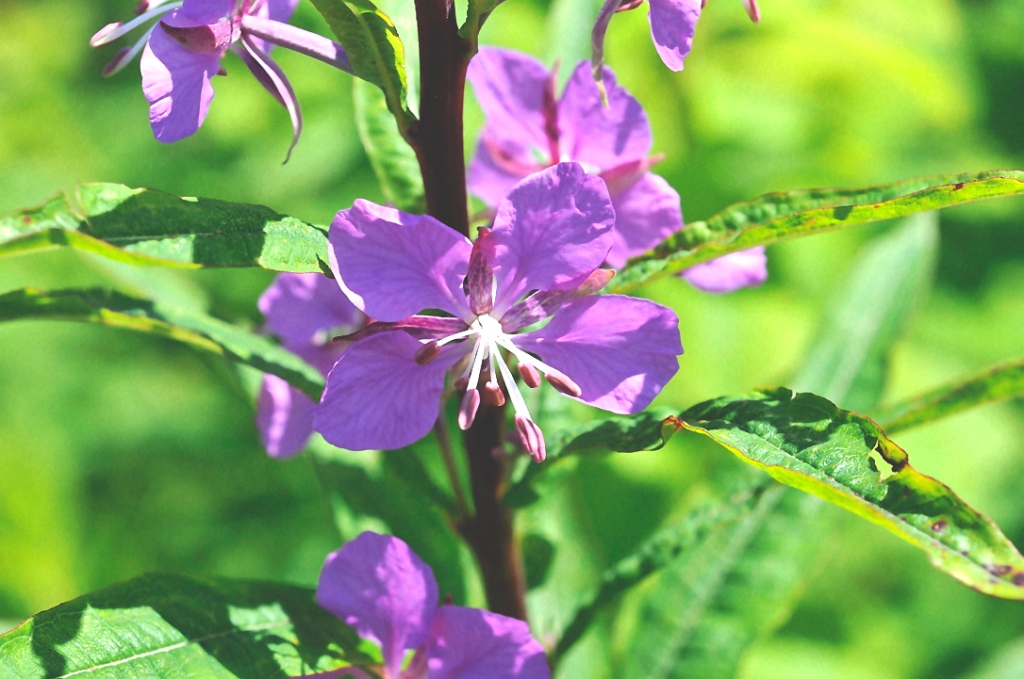

The bent stems are about 0.6 to 1 meter long. The lance shaped leaves arise from the stem in whorls (3-4 leaves). The pink flowers arise in clusters in upper axils (where the leaf joins the stem). Leaves and flowers steeped in boiling water make a fragrant tea.
_________________________________________________________________________________________________________________________________
Myricaceae (Wax-Myrtle)
Myrica gale (Sweet Gale or Bog Myrtle)
http://en.wikipedia.org/wiki/Myrica_gale
Http://plants.usda.gov/java/profile?symbol=MYGA
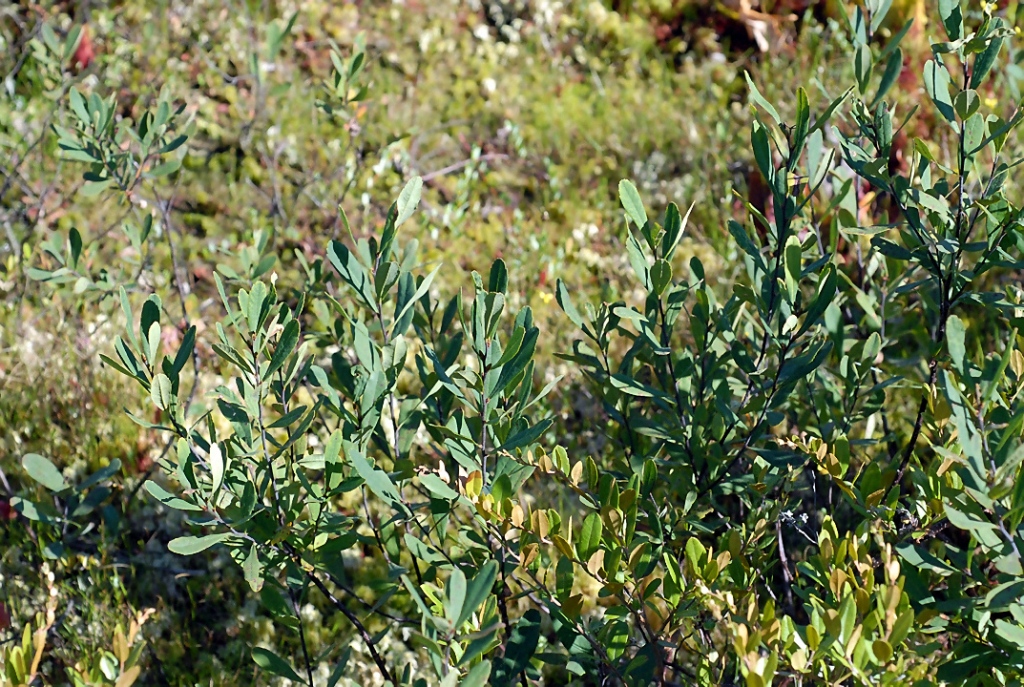


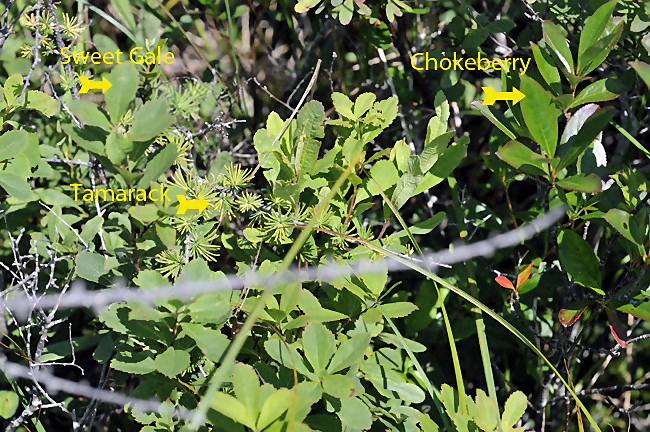
Sweet gale is a deciduous shrub, 1 to 1.8 meters tall, with simple, gray-green leaves about 2.5 to 3.8 cm long, arranged spirally along the stem. Leaves have a wide, toothed tip and taper to a narrow base. This species has separate sexes and flowers are arranged on catkins. A pleasant, fragrant odor emanates from crushed leaves. Dried leaves have been spread on bed sheets to ward off biting insects. Leaf extracts apparently have antibacterial activity. Oil derived from the Sweet Gale plant, although considered toxic, is packaged in some skin care products. Extracts from tree bark were once used to tan steer hides. Additional photographs of this species are located in the Bog Borders page.
____________________________________________________________________________________________________________________________________
Poaceae (Grass Family)
Calamogrostis canadensis (Grass, Blue-Joint)
Http://en.wikipedia.org/wiki/Calamagrostis_canadensis
Http://plants.usda.gov/java/profile?symbol=CACA4

This tussock forming species, is about 1 to 1.5 meters high. Vertical stems arise from horizontal underground stems (Rhizomes). Thin (generally less than 1.3 cm wide) lance-shaped leaves can be seen above.
_______________________________________________________________________________________________________________________________
Rosaceae (Rose Family)
Spiraea alba (Meadowsweet)
Http://en.wikipedia.org/wiki/Spiraea_alba
Http://plants.usda.gov/java/profile?symbol=SPALL
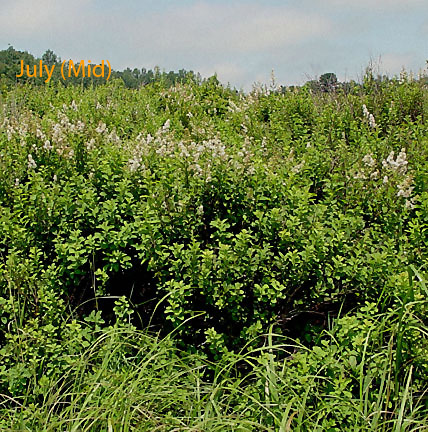


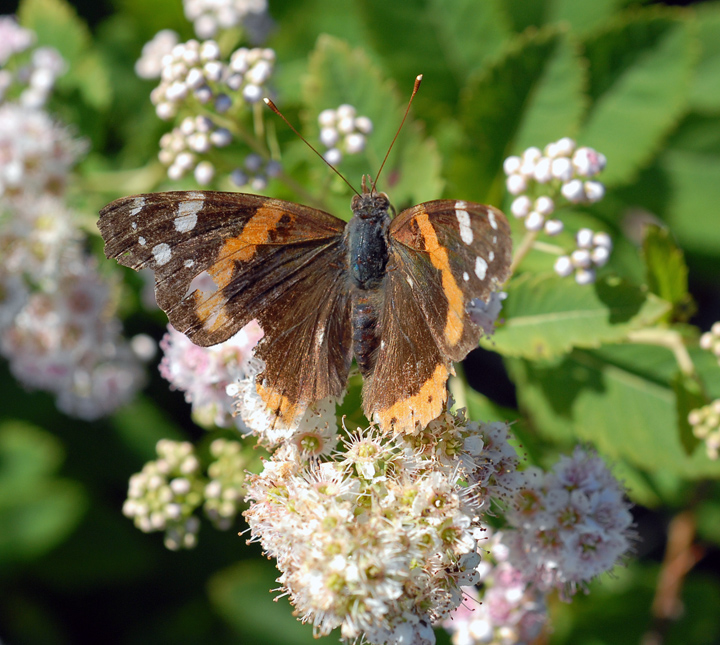
Meadowsweet has an erect stiff stem about 1 meter high. Lance-shaped leaves with finely serrated (Toothed) margins, arise alternately from the stem. Clusters of small, white, rose-like, flowers emerge at the top of the stem. Herbal tea, made by steeping leaves in boiling water, has been used to reduce fever and inflammation. The active ingredient in leaves is methyl salicylate which in high concentrations can be toxic.
_________________________________________________________________________________________________________________________________
Photina (Aronia) melanocarpa (Chokeberry, Black)
Http://en.wikipedia.org/wiki/Photina_melanocarpa
Http://plants.usda.gov/java/profile?symbol=ARME6

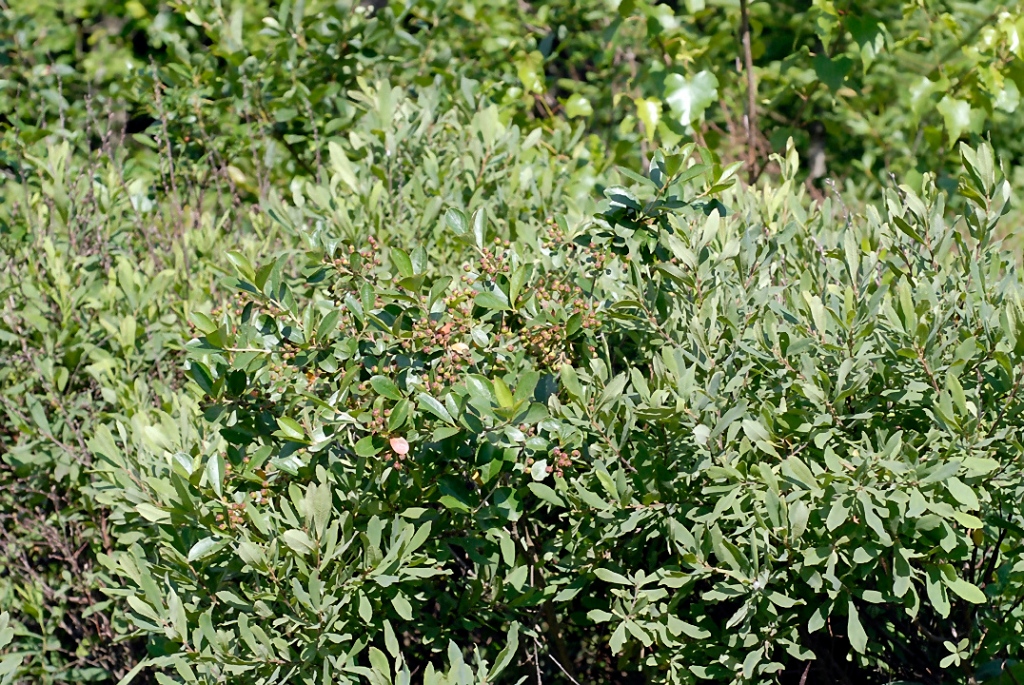
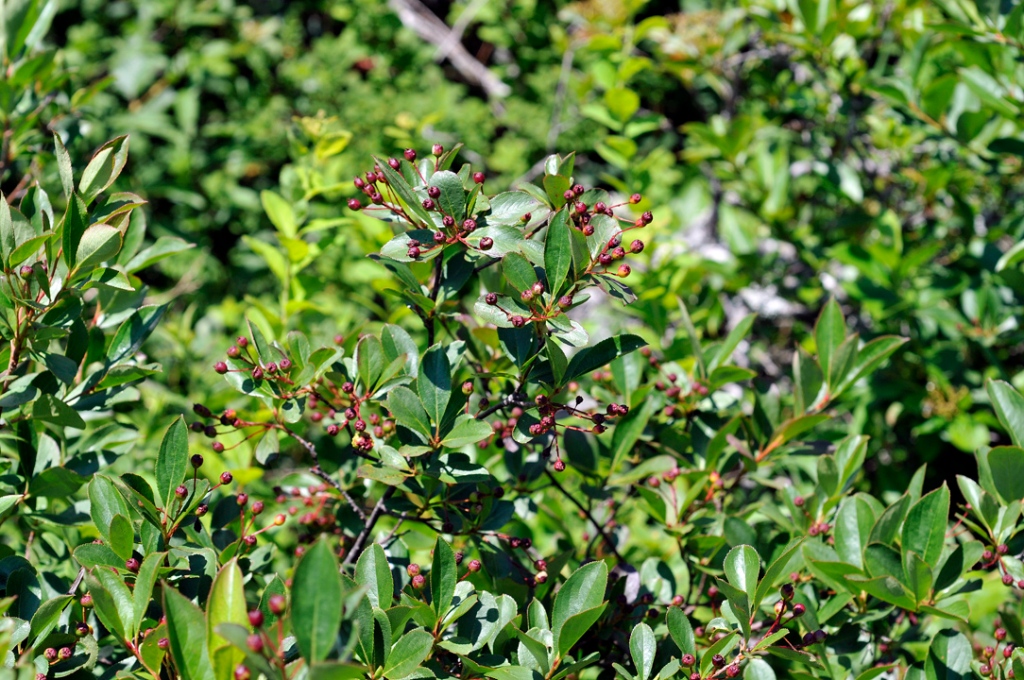



This deciduous shrub is generally about 0.3 to 0.6 meters tall. It bears fine toothed, bright green, leaves on the upper 2/3 of the stem. There are clusters of white flowers that develop into blue-black fruit (Pome) later in the summer. The fruit is consumed by birds and small mammals. The leaves contain high concentrations of polyphenols and anthocyanins, and have been used to stimulate circulation and to treat urinary tract infections.
______________________________________________________________________________________________________________________________
Rubus chamaemorus (Baked- apple Berry or Cloudberry)
Http://en.wikipedia.org/wiki/Cloudberry
Http://plants.usda.gov/java/profile?symbol=RUCH
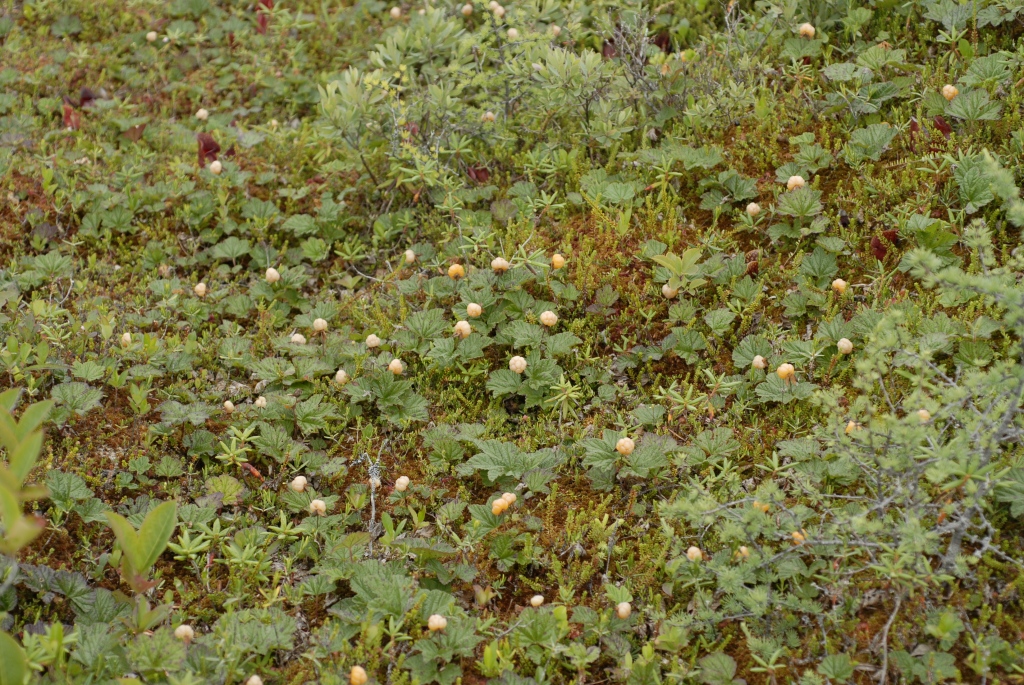


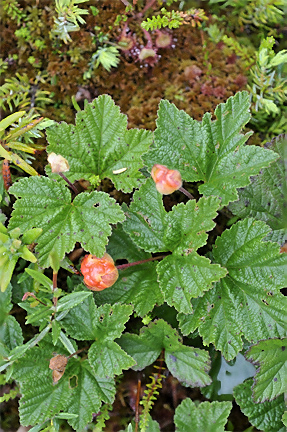
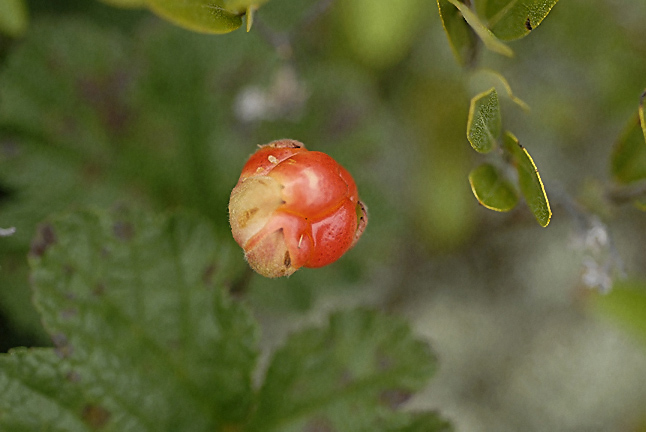


Cloudberry , found in the Eagle Hill Bog, West Quoddy Head Bog and on the Corea Heath, reaches a height of about 15 to 20 cm. The conspicuous dark green, alternate, toothed, wrinkled leaves, each with 5-7 lobes, arise at the tip of straight, unbranched stems (1-3 per stem). The red fruit, high in vitamin C, is raspberry-like. Berries can be eaten raw or made into preserves, juices, or a Finnish liqueur. Root preparations have been used to treat coughs and fever and to enhance fertility in women. Note the white, rose-like flower.

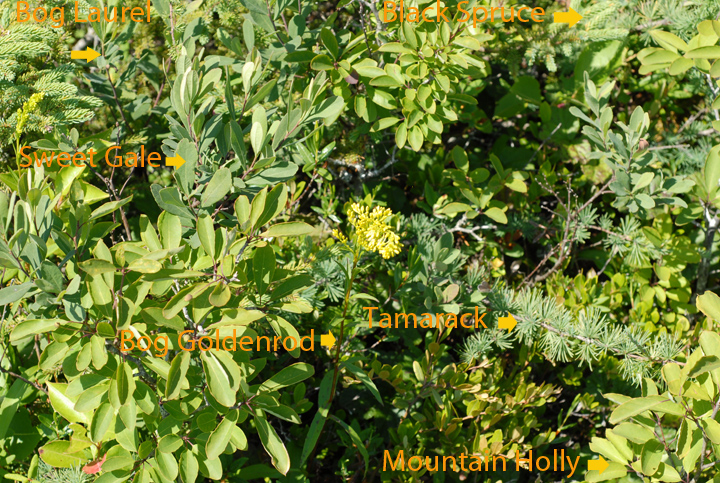
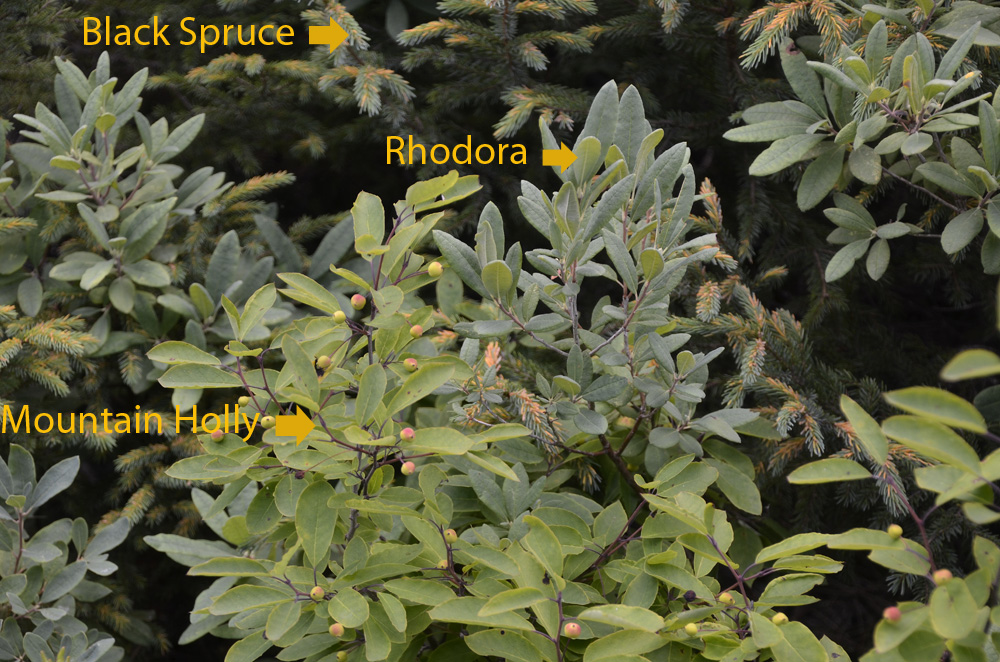





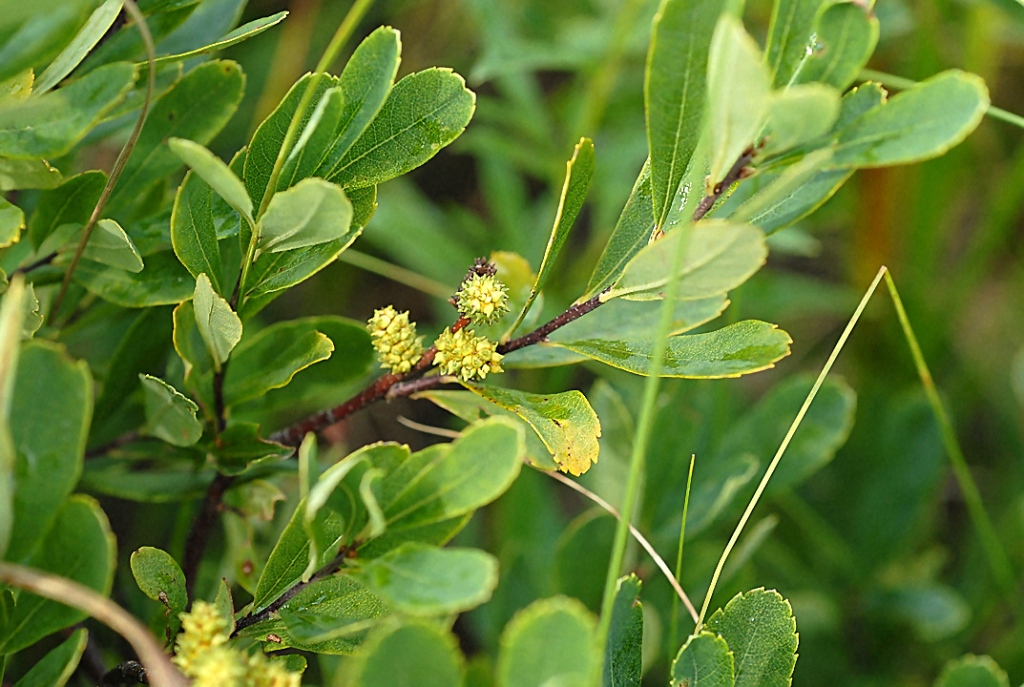

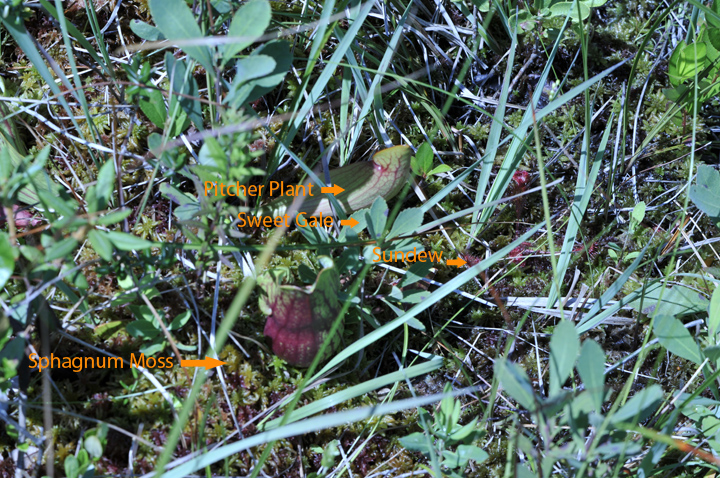



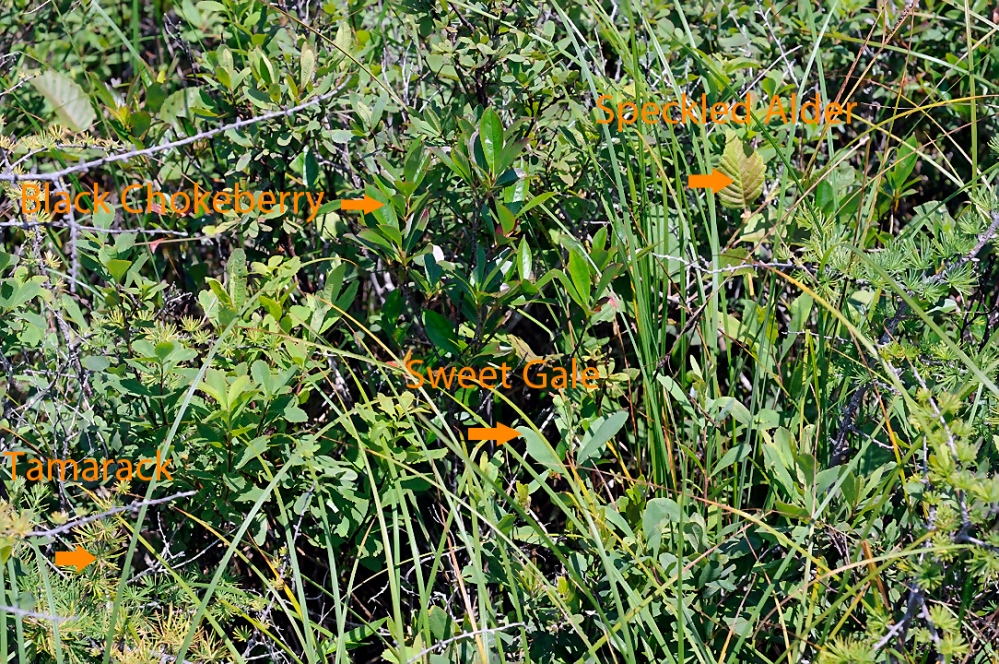
Enjoyed your excellent site. We are trying to identify a wild, hip high, deciduous plant that is covering our shore-front in mid coast Maine. It has a woody stem and is bush like though it does cover quite a bit of space and is not defined to a single trunk. Presently the oval shaped leaves are deep red. If I remember correctly, it has a dark blue berry at about the same time the blueberries do. May I send a photo to your email?
Thanks.